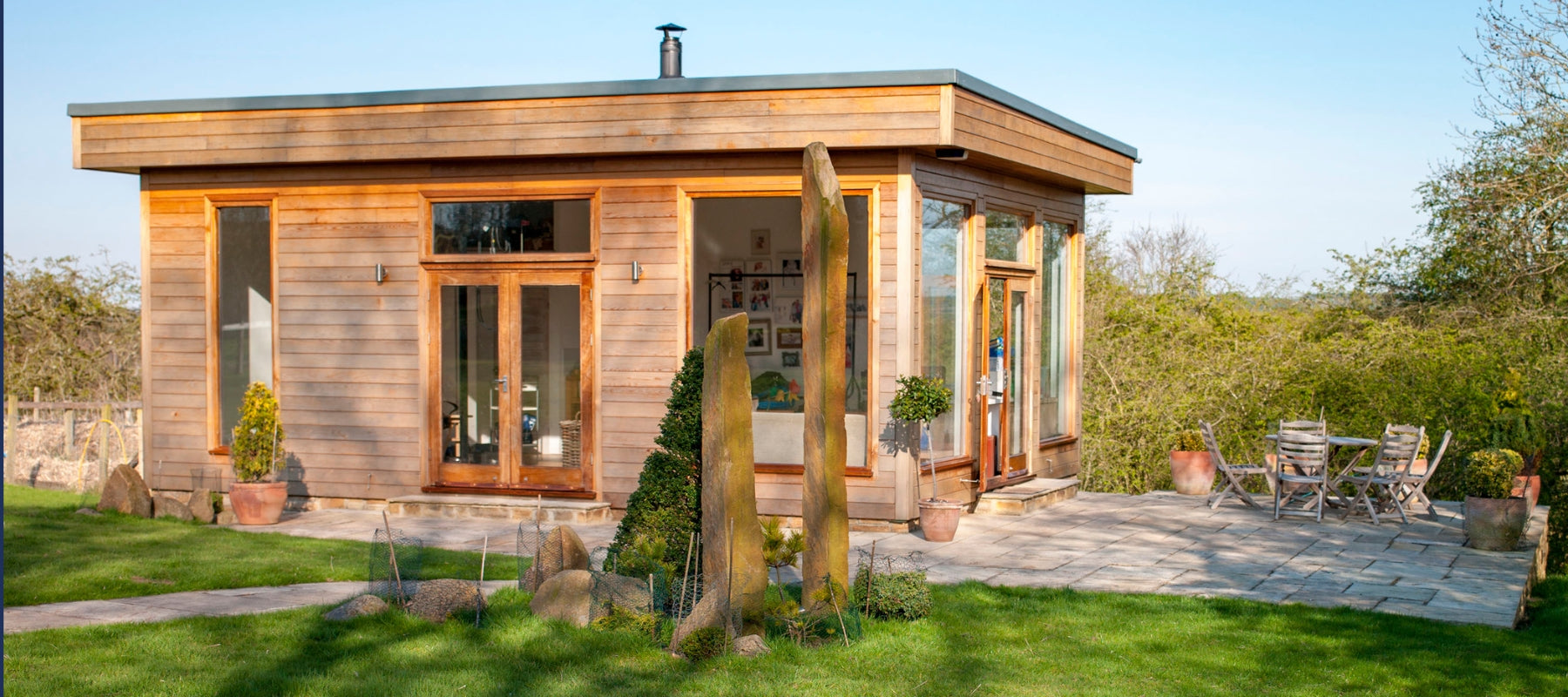
How to Ventilate Your Garden Room for Year-Round Comfort
A garden room is a fantastic addition to any outdoor space, providing a functional and comfortable area for work, relaxation, or hobbies. However, ensuring proper ventilation is essential to maintain air quality, prevent dampness, and avoid condensation issues. This guide will explore the best ventilation options, methods for adding airflow, and how to keep your garden room dry and comfortable year-round.

Why Ventilation is Important in a Garden Room?
Proper ventilation in a garden room helps regulate air quality, prevent moisture buildup, and maintain a comfortable temperature. Without adequate airflow, issues such as dampness, condensation, and mould can arise, leading to structural damage and an unhealthy environment.
Choosing the Best Ventilation System for Your Garden Room
The best ventilation system for your garden room depends on size, usage, and location. Here are some practical options:
1. Passive Ventilation: Natural Airflow Solutions
Passive ventilation relies on natural airflow through strategically placed vents, windows, and gaps. Some options include:
-
Trickle vents: Small vents installed in windows or walls that allow continuous airflow.
-
Louvre vents: Adjustable slatted vents that can be placed on opposite walls for cross-ventilation.
2. Mechanical Ventilation: Improving Air Circulation
If natural ventilation isn’t sufficient, mechanical solutions can help improve airflow:
-
Extractor fans: Ideal for garden rooms used as offices or gyms, helping remove stale air and excess moisture.
-
Heat recovery ventilation (HRV) systems: These systems circulate fresh air while retaining warmth, improving energy efficiency in insulated garden rooms.

How to Add Ventilation to Your Garden Room
If your garden room lacks proper ventilation, you can optimise airflow using the following methods:
1. Installing Wall or Window Vents
Adding trickle vents to windows or installing wall vents allows a steady airflow while preventing excessive heat loss.
2. Utilising Windows and Doors for Cross-Ventilation
Having at least two opening windows on opposite sides of the room promotes cross-ventilation, allowing fresh air to circulate naturally.
3. Adding a Roof Vent for Heat Escape
A roof vent can help hot air escape, reducing the risk of overheating in summer while maintaining airflow year-round.
4. Fitting an Extractor Fan for Active Air Removal
An extractor fan helps remove humid air from enclosed or insulated garden rooms, especially if the space is used for exercise, hobbies, or as a workspace.

Preventing Dampness in a Garden Room
Yes, garden rooms can become damp if ventilation and insulation are inadequate. Common causes of dampness include:
-
Poor air circulation leads to trapped moisture
-
Lack of insulation causes condensation buildup
-
Water ingress from the ground or roof
How to Keep Your Garden Room Dry
To prevent dampness, consider the following steps:
-
Use a damp-proof membrane under the base.
-
Apply weatherproof sealants on walls and roof joints.
-
Ensure proper insulation to reduce temperature fluctuations.

Managing Condensation in Your Garden Room
Condensation forms when warm, moist air meets a cold surface, leading to water droplets forming on windows and walls. To reduce condensation:
Practical Steps to Eliminate Condensation
-
Improve Ventilation: Ensure trickle vents, windows, and extractors are functioning effectively.
-
Use a Dehumidifier: This can help absorb excess moisture in particularly humid conditions.
-
Maintain a Stable Temperature: Using a small heater to keep the temperature stable can reduce condensation.
-
Avoid Drying Clothes Indoors: This adds excess moisture to the air, worsening condensation issues.

Conclusion
Proper ventilation is key to maintaining a healthy and comfortable garden room. You can create a functional and durable space by incorporating passive and mechanical ventilation, ensuring adequate airflow under the structure, and taking proactive steps to prevent condensation and dampness. Whether you use your garden room for work, relaxation, or hobbies, good ventilation will improve your experience and prolong the lifespan of your structure.

